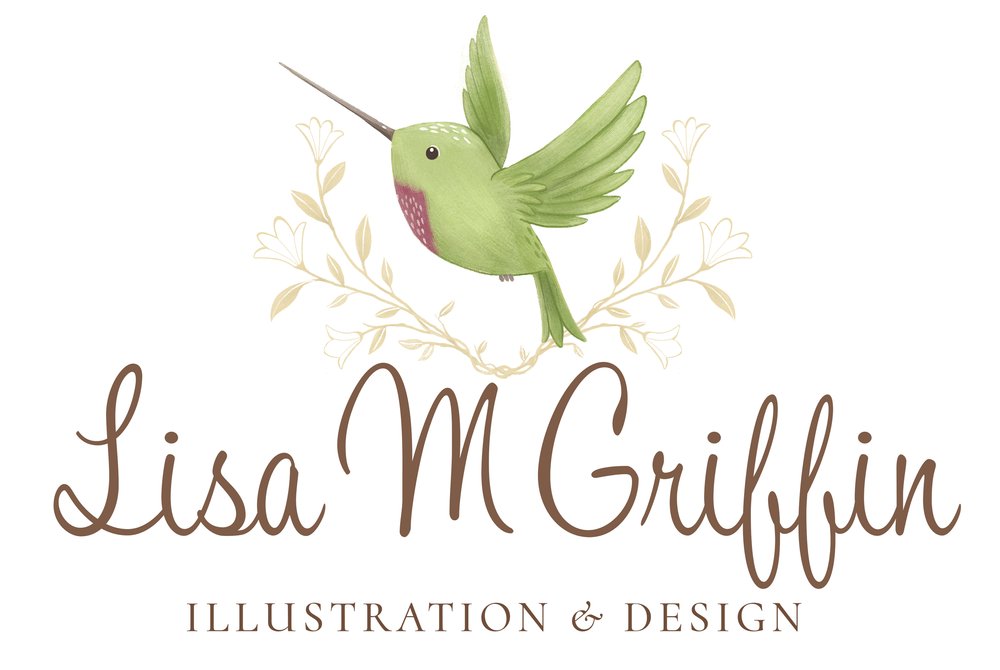I love receiving questions about freelancing and illustration from folks but it can be very time-intensive to personally answer them all (and often the questions are similar). Instead, I thought it would be helpful to more of you, if I answered some of the more common questions here on the blog.
Q: Did you go to art school or are you self-taught?
I have a BFA in Visual Design and Illustration, but I don’t think you need to have a degree in order to be a working freelance artist. If you are devoted to your craft, organized, and motivated you have what it takes. Being a freelancer means you are running a business, so I would recommend taking a business or marketing class. That wasn’t part of my college curriculum and it would have been very helpful to understand the business side of art.
If you are passionate about your art and love what you do, that is half the battle!
Q: Do I need an agent?
For many many years, I did not have an agent. I think it is possible to find freelance work with companies in many different industries without one. If you’re interested in children’s publishing, having a literary/art agent can help you submit to larger houses that might be closed otherwise, but there are plenty of smaller publishers who are open to unagented submissions. Joining a professional organization like The Society of Children’s Book Writers and Illustrators (SCBWI) is a great way to meet people in the industry and attend some wonderful conferences and events. I would also recommend that you do some industry research about the companies you would like to work with and see what their submission guidelines are.
Q: How do you find illustration clients?
There are plenty of ways to get yourself out there and find clients… but you need to be willing to do some work to find companies that fit your style and art focus. I have a class on Skillshare: Showcase Your Art: Self-Promotion for Creatives that walks you through research, promotions, pitching, and networking. This is a great place to start in helping you create a list of clients to pitch.
Q: How do you stay on schedule with project deadlines?
If you hope to run a freelance business, you need to develop up with an organized system that works for you. That begins with charting the hours you have available each day for projects. If you’re working a full-time job while starting a freelance gig on the side - be realistic about the hours so that you don’t stretch yourself too thin. Should a client approach you with a rush assignment, make sure you have the time available to take that job on. If a deadline is too tight, ask if there is any wiggle room on the deadline AND do that before you agree to the project. Never put a client in a difficult position by not delivering on time. I keep a production schedule in the studio so that I can see what projects are in progress, coming due, or with the client. As long as you have a planned and organized way of keeping track of your projects, you should be able to keep up on deadlines.
Q: What do you do to overcome creative block?
So many creatives deal with creative block and while I have as well, I think I more often deal with creative burnout. Personally, I’m a Type A Creative. This means I work best when I have a plan… because I often want to do so many creative things. That desire and often, those big ideas, use up a lot of creative energy. When energy runs dry, I am more susceptible to burnout. Sound familiar? Creative block can feel just as frustrating and terrible but I believe that both come down to mindfulness. Knowing how to navigate negative talk that can spiral into self-doubt and fear. When dealing with burnout, I give myself rest. It is a sign that I have pushed myself to a limit and it is time to recharge. So, I read a book, go for a walk, take a soothing Yin Yoga class, or call a friend to catch up. And I steer clear of the studio for the day and sometimes several days, so that when I do return I have a clear mind and a fresh perspective. In the case of creative block, I move in the opposite direction. If I feel like I don’t know what to draw, I simply grab my pencil open up my sketchbook, and start scribbling. I might revisit old artwork and give it a refresh. I turn to Pinterest and look at Inspiration boards and if all else fails, I put on my most energizing playlist to get the blood pumping a bit. I have never overcome a creative block by running from it - instead, I pick up a pencil work through it. I have a list of drawing prompts in the Crew Resource Library that might help if you are struggling with ideas. Follow this link to join if you don’t already have access to the library.
Once you discover what actions work best for you, it will be easier to move beyond those bumps in the road that we all have to deal with from time to time.
Q: What is the one thing you wish you knew when you were starting out?
I wish that I had known how important it would be to have multiple income streams. I was hyper-focused on children’s publishing because it was my first love, and I didn’t try for any other creative avenues. A freelance artist is a small business - you need to think like a business - which means not just making lovely art, but marketing and selling it. That is a lot easier to do if your art can bridge multiple industries.
Q: Do you work in traditional or digital mediums?
90% of my illustrations begin with a pencil. I roughly (very roughly) sketch out ideas in one of the many sketchbooks I have in the studio. It’s easier for me to work out ideas this way, it helps work through the blah before I find a good concept. Then, I take the sketch into a digital medium. I love the flexibility that comes with it. For some of my illustrations, I will work in Procreate or Photoshop and others Illustrator - it just depends on how I want to use the final art.
Q: I love your style, has it changed over time?
Oh my goodness YES! My style has evolved a lot over the years and will continue to do so. Personally, I can’t imagine drawing in the same fashion that I did 10 years ago. Honestly seeing some of my early work can make me twinge. But it shows growth and how my work has evolved. Going through old art is like a time capsule, reflecting the experiences and influences that shaped your work (and you).
And to show you what I mean about style evolving over time, here is an illustration that I created many years ago in Prismacolor pencil and watercolor.
If you are an illustrator or designer who is just starting out, I recommend joining the Creative Crew.
It is a free resource that I offer to members that includes access to the Crew’s Nest Resource Library (goodies for your creative business and soul) as well as a monthly Pep Talk where I share a tip or some helpful advice along with a socially-distant Art Hug. Click here to join today.













